Sustainable Pearls and Ethical Jewellery
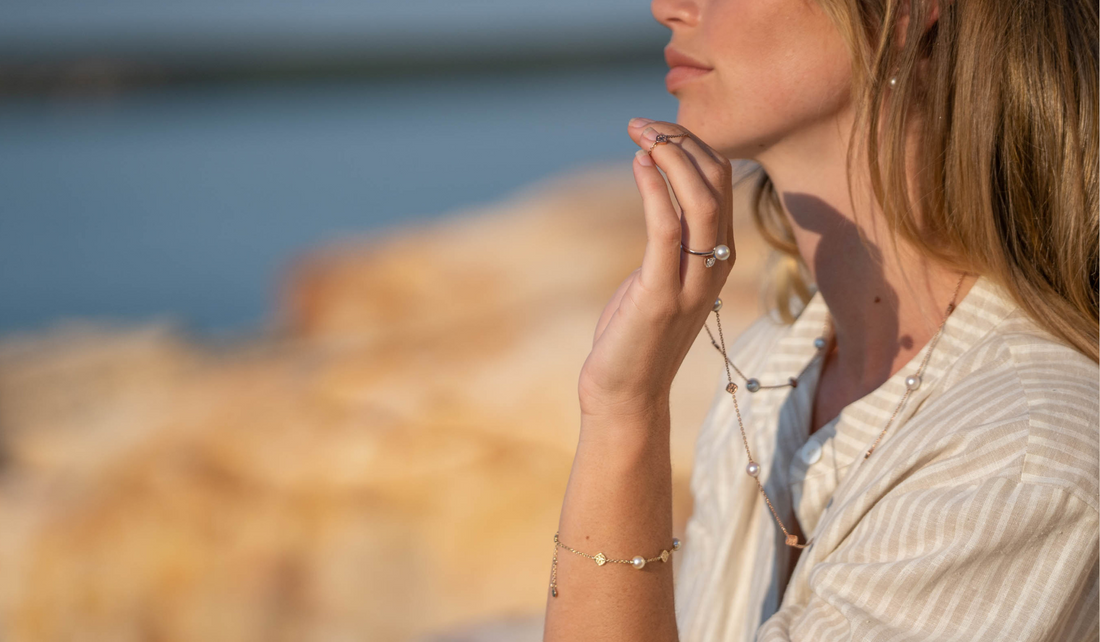

When buying pearl jewellery, it’s easy to get caught up in the choice between a pendant or a strand, some classic studs or an elegant hook. But beyond a pearl’s inherent beauty lies an important backstory that needs to be told.
The ethics of fine jewellery is a topic that captivated audiences worldwide even before Leonardo DiCaprio graced our screens in Blood Diamond. Today, in the face of climate change, modern buyers are more aware than ever of the impact of their purchases. To be successful, jewellery brands can no longer rely on striking designs and the highest quality gems – today it’s defined by a clear commitment to sustainability and protecting the environment. At Pearls of Australia, we are so proud to share a story that reflects these values. And it’s a story that starts in the ocean.
Pearls are the only precious gem produced by a living organism – the oyster. They are grown, not mined, in some of the world’s most biodiverse environments. To cultivate rare, high-quality pearls, you need to grow the healthiest oysters in the most pristine waterways. So environmental stewardship is not just about ethics, it’s essential to success.
As pearl farmers, we operate within the blue economy, which balances economic growth with the conservation of marine life and our ocean’s ecosystems, creates sustainable livelihoods in coastal communities, and offers an ethical, low-impact alternative to jewellery featuring mined gemstones.
At Pearls of Australia, we continuously evaluate our aquaculture practices via independent scientific research to ensure that the precious marine ecosystems where we cultivate our pearls are protected and improved.
This is one of our key initiatives in our commitment to creating truly ethical high-end jewellery. It’s a shift that has rippled out across the luxury industry, with buyers more interested than ever in the provenance and environmental footprint of their jewellery, especially in the face of climate change.
We are so proud not only of the quality and rarity of our pearls, but also to be pioneers in ethical jewellery production worldwide. Learn more about how we’re striving to pave the way in this sector here.
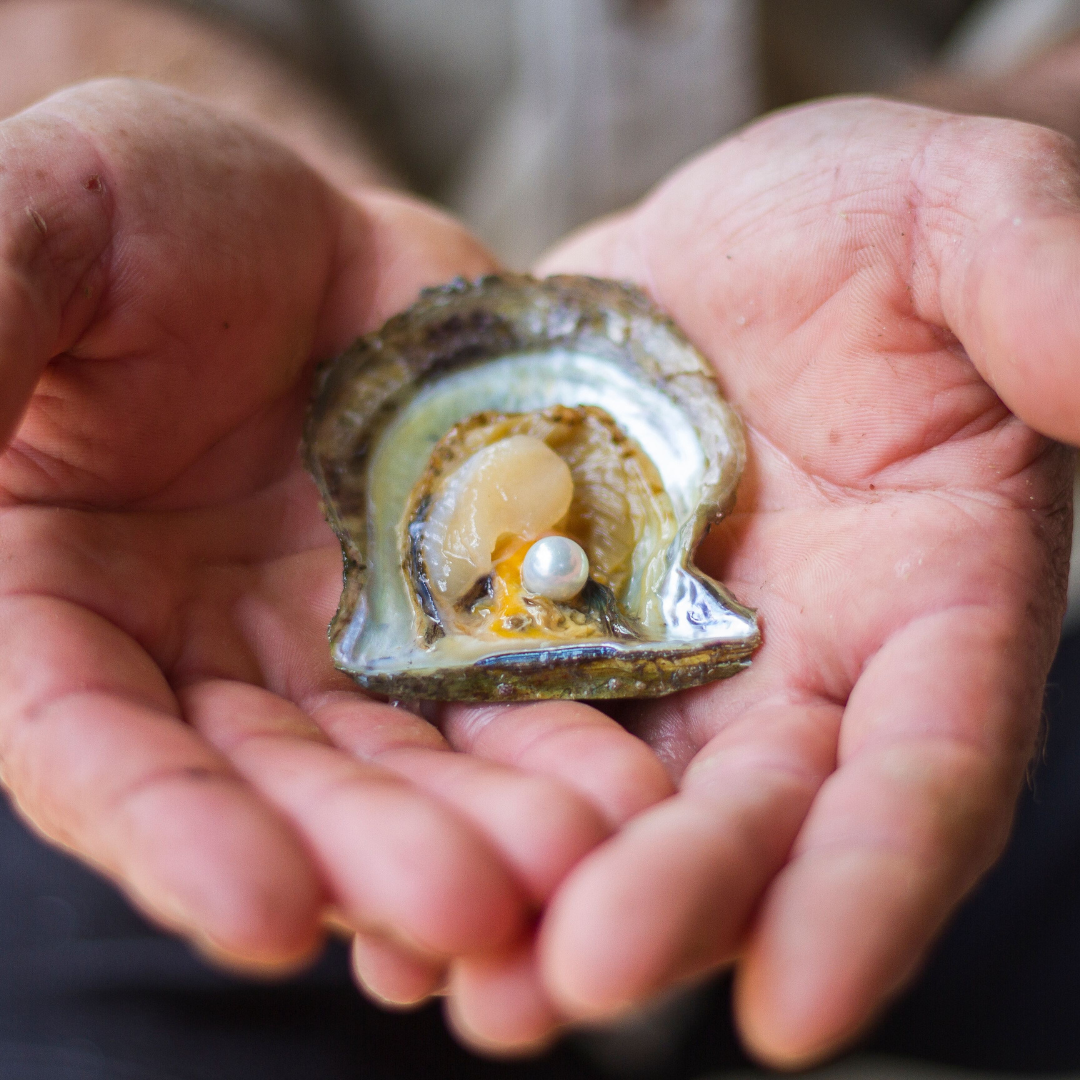
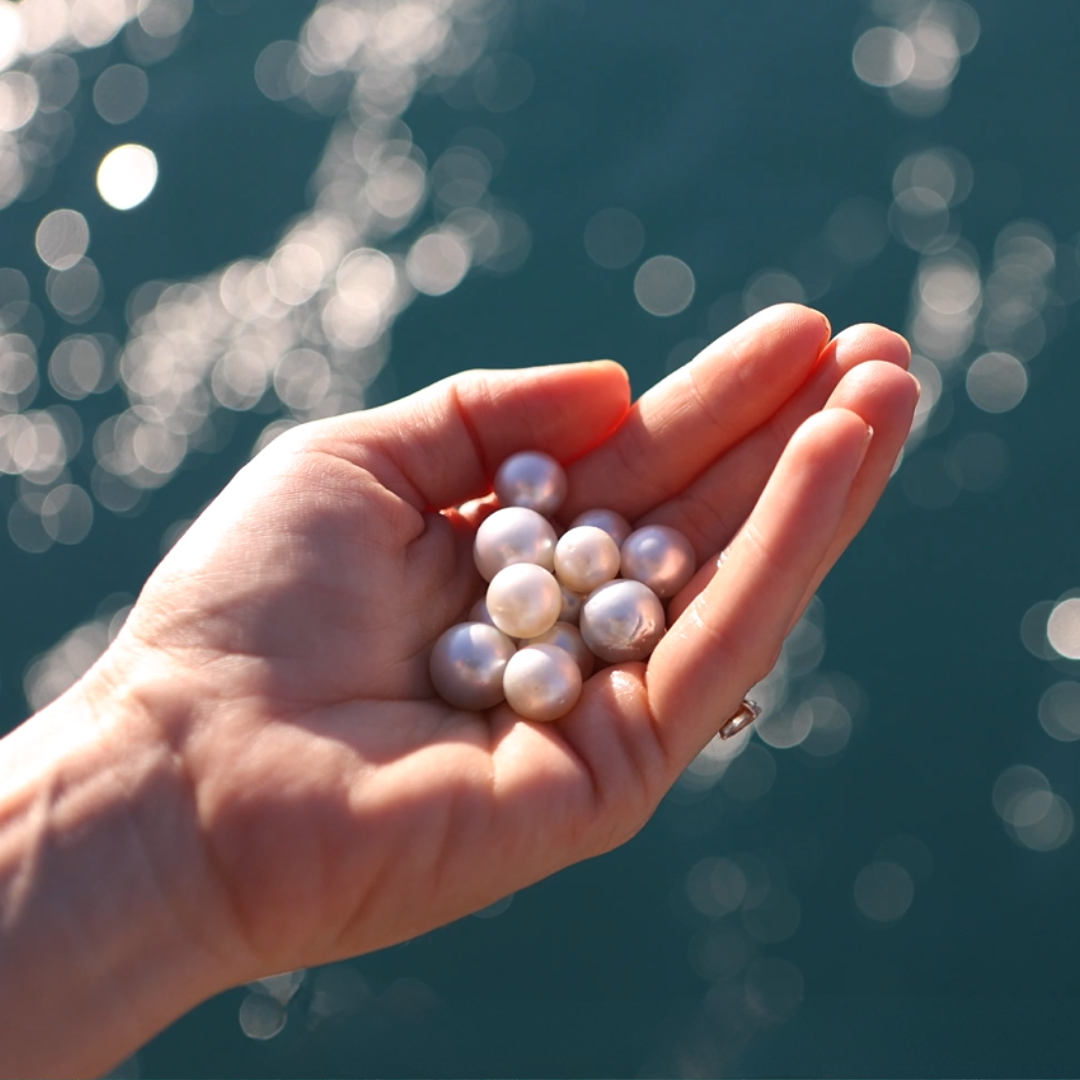
When it comes to sustainability, saltwater pearls stand apart from every other precious gem. Unlike gemstones that are extracted by destructive mining, pearls are formed organically within living oysters, often in carefully managed marine environments that actively benefit fragile ecosystems such as ocean reefs and mangrove forests.
Mining for gemstones often involves deforestation, land degradation, habitat destruction and the use of toxic chemicals. All these processes are known to harm ecosystems and reduce biodiversity. Unlike mined gems, saltwater pearls come from oysters which, when responsibly farmed, have a multifaceted positive impact on their marine environments. Let’s discuss how.
Our pearl oyster farms act as suspended ocean reefs, helping to create and nurture a rich variety of marine life. Figures from The Nature Conservancy show that every year, each hectare of oyster farm filters 2.7 billion litres of seawater, removes 225kgs of nitrogen and phosphate from the sea waters, provides a home to over 100 marine species and allows over 375kg of fish to grow and thrive for catching and consumption.
In a time when commitment to environmental stewardship and sustainable leadership is more important than ever, we are so proud not only of the provenance of our jewellery, but to be playing a part in this important process.
Saltwater pearl shell can only thrive in biodiversity hotspots. As filter feeders, oysters contribute greatly to the health of these marine ecosystems, but it is the habitats themselves that support marine biodiversity.
Often celebrated as the “nurseries of the sea”, seagrass beds, saltmarsh and mangroves sustain huge varieties of marine life and provide refuge to juvenile species of fish, crabs and mollusks. Living amongst a subterranean tangle of roots and leaves, these young species can feed, grow and evade predators, increasing their chances of survival.
It is in these living waterways that oysters thrive in symbiotic harmony with both their environment and the rich marine life around them.
There is a second reason why mangroves, saltmarsh, and seagrass ecosystems are so important. Beyond their capacity to nurture marine life, these fragile ecosystems are hugely effective blue carbon sinks, sequestering and storing significant amounts of carbon from our atmosphere, and playing a vital role in the fight against climate change.
By protecting and expanding these ecosystems, the extra care and environmental monitoring that we undertake as part of our pearl farm operations is critical.
If you’ve ever dreamed of owning pearls and started to do your research, you will find that the word “pearl” is only the tip of the iceberg. There are significant differences in the way pearls are farmed, harvested and cultivated, and each has their own different impact on the environment. Understanding these distinctions is key to making an ethical and sustainable choice when selecting your pearls.
Both natural and cultured pearls are “real pearls”, the only difference is in the way that they are produced. A natural pearl occurs when an irritant such as a shell fragment or piece of ocean debris makes its way inside an oyster or mollusk. This activates the animal’s defence mechanism, which coats the irritant in a iridescent substance called nacre. These layers of nacre build up and create a pearl over the span of several years. These are very rare – only 1 in 10,000 wild oysters will produce a natural pearl.
A cultured pearl is created by the exact same process, but with human assistance. To cultivate a pearl, a skilled technician will insert a tiny bead called a nucleus, along with a piece of mantle tissue, inside the shell’s reproductive organs. The oyster’s natural defense mechanism will coat that nucleus in layers of nacre, and again, over several years, it will create a pearl.
This process of culturing pearls was discovered and mastered in the 19th Century in Japan by Mikimoto. No non-Japanese pearl farm had successfully produced a cultured pearl until 1960, when thanks to Lyndon Brown and three local Bardi Jawi men – Tom Wiggan, Aubrey Tigan and Gordon Dixon – the Australian cultured pearling story began at our very own Cygnet Bay Pearl Farm.
Within the world of cultured pearls, you might also come across a distinction between saltwater pearls and freshwater pearls. It's important to understand the differences so you choose the right pearl for you. Learn about freshwater vs saltwater pearls in this helpful guide.
When comparing the ethics of real vs imitation pearls, we need to consider the environmental impact of production. When sustainably farmed, cultured pearls grow in pristine waterways and have a measurable positive impact on those environments. Imitation pearls, meanwhile, are usually made of plastic, glass or other materials whose manufacturing is usually more involved and contributes to plastic waste and other kinds of pollution. If you’re wondering how to tell the difference between real and fake pearls, visit our blog here.
Our pearl farms are located in some of the Australia’s most pristine and protected marine wilderness areas. Alongside cultivating oysters, our operations include monitoring water quality, preserving marine biodiversity, minimising waste, and safeguarding these precious ecosystems for future generations.
Sustainable saltwater pearl farming involves maintaining the highest standards of water quality and minimising environmental impact. This involves avoiding harmful chemicals, using eco-friendly materials, and supporting marine biodiversity through responsible aquaculture and practices such as habitat restoration.
We also utilise every byproduct from the shell, including seedless (Keshi) pearls, Mother of Pearl, and the pearl oyster meat itself. Our pearls can be found in some local gins and cosmetics, and we even crush up our Akoya shells and use them to fill in potholes! This “nothing is wasted” ethos is a key element of sustainable pearl farming.
“For us, sustainable practices go far beyond creating beautiful pearls – it’s about honouring the ecosystems that nurture our oysters, safeguarding biodiversity for future generations, and giving back to the coastal communities we call home,” said James Brown, third generation pearl farmer and Managing Director of Pearls of Australia.
“When we protect our waters, we’re ensuring the health and vitality of the entire environments that allow us to cultivate the rarest, most beautiful saltwater pearls. Sustainability is at the very heart of who we are, and what we do.”
Pearls of Australia has two pearl farms, located in Western Australia and New South Wales. Established in the late 1940s in Western Australia’s remote Kimberley region, Cygnet Bay Pearl Farm played a pioneering role in Australia’s early pearling history. Found on the remote Dampier Peninsula, Cygnet Bay is one of the last marine wilderness frontiers – a place where red, mangrove-fringed sands meet some of the biggest tides in the country.
This land of extremes gives birth to some of Australia’s finest South Sea pearls, carefully cultivated in the native Pinctada maxima pearl shell and long coveted for their large size and luminous beauty.
Meanwhile, the Lower Hawkesbury River plays home to Broken Bay Pearl Farm, New South Wales’ only operating pearl farm. Amongst the Hawkesbury’s tangled estuaries, our expert aquaculture team carefully cultivates Akoya pearl oysters – Pinctada fucata. What our Australian Akoya pearls lack in size they make up for in character, emerging from the shell in a rainbow of hues from white to gold to pink and even blue.
Both farms have opened their doors to the public, and love sharing their stories, practices and wilderness homes with guests on their unforgettable pearl farm tours. Learn more about our story, and James Brown’s decision to open the doors and give people the opportunity to learn about our commitment to quality and provenance through education.
By collaborating with leading marine scientists, government bodies and our Traditional Owners, the Bardi Jawi people, we continuously monitor and measure the health of the Kimberley waters to guide our stewardship. This science-based approach gives us confidence that what we do supports conservation and the long-term vitality of this precious ecosystem.
Cygnet Bay Pearl Farm is located in one of the last great marine wildernesses on Earth. In 2009, our commitment to the protection and preservation of this vital habitat led to the establishment of the Kimberley Marine Research Centre (KMRS). The only one of its kind in the Australian pearling industry, KMRS is a partnership between Cygnet Bay Pearl Farm and the Western Australian Marine Science Institution which conducts independent marine research, exploration and conservation activities throughout the Kimberley’s marine and coastal environments.
Based at Cygnet Bay, KMRS collaborates with independent scientists, government and university agencies, who provide valuable insights into the health of the Kimberley’s waters and sustainable aquaculture pearl farming practices.
The KMRS team also collaborates with local Indigenous communities such as the Bardi Jawi people. This important relationship integrates traditional knowledge with scientific research, creating a holistic and informed approach to conservation and sustainable resource management.
Our commitment to sustainability is deeply rooted in the cultural values and traditional stewardship of the Bardi Jawi community. Through collaborative initiatives like Take 3 for the Sea, we extend this commitment beyond our farm to inspire broader action in protecting the ocean and its ecosystems.
The relationship between Cygnet Bay and its Traditional Owners, the Bardi Jawi people, spans nearly eight decades. We have the deepest respect for the Bardi Jawi, and the knowledge and wisdom with which they have cared for Country for thousands of years. Our enduring partnership has strengthened both our pearl farm operations and sustainability practices through cultural knowledge sharing, collective marine stewardship, employment opportunities, and joint tourism ventures.
At Pearls of Australia, we are so proud to have partnered with the environmental initiative Take 3 for the Sea, which raises awareness around the devastating impact of plastic pollution in the ocean and empowers people to make a profound impact with simple actions.
Not only do our pearl farms regularly participate in Take 3 cleanups, but as part of our Take 3 collaborations we have crafted four charm bracelets featuring aquamarine, lapis lazuli and turquoise set alongside polished Mother of Pearl shell harvested at our very own Cygnet Bay Pearl Farm. The delicately engraved Mother of Pearl turtle charm reflects our commitment to protecting our coastlines, and 20 percent of all proceeds go directly to Take 3, which contribute to the removal of up to 195 pieces of litter from our shores.
Ethical jewellery is more than a trend – it’s an integral part of the slow fashion movement. To be truly ethical, jewellery brands must weave sustainability practices through every stage of production, not only to meet the expectations of eco-conscious consumers, but to educate and inspire more people to value and demand ethical alternatives.
Since we both farm the oysters and craft the jewellery, our pearls are fully traceable from seeding to the finished piece on our showroom floor. Each pearl jewellery piece comes with a Statement of Provenance, verifying its origin and journey. This document includes details such as the farm location, confirmation that the pearl has not been chemically treated or altered, and a Certificate of Authenticity.
Furthermore, Pearls of Australia’s jewellery ranges are crafted from a mix of new and recycled metals that come from trusted suppliers that respect our environment and support fair trade and safe workplace conditions.
Our handpicked diamonds are chosen for their premium quality and come from guaranteed suppliers that are committed to the Kimberley Process, which focusses on removing conflict diamonds from the international jewellery market.
To learn more about our suppliers, read the Our Workshop section on our FAQs page.
An important part of our sustainability journey has been raising awareness about the importance of biodiversity, and the beauty and fragility of our ocean reefs and saltwater ecosystems. Many of our most popular collections tell stories from these environments, adding meaning to each jewellery purchase.
Our Kimberley Lily and Mangrove Lily collections have been inspired by the native lily species that are found by the waterways where our pearl shell grows. These are true biodiversity hotspots; the rugged and remote Kimberley region is home to over 3,500 lily varieties, with new species still being discovered to this day.
The Seagrass Collection is another of our most popular collections, which pays homage to the humble plant that has a symbiotic relationship with our pearl oysters, and acts as a vital carbon sequester. In each piece, the iconic seagrass motif floats in harmony alongside a luminous Australian Akoya pearl, lovingly cultivated in NSW at our Broken Bay Pearl Farm.
Jewellery from these collections becomes a wearable testament to the connection we have to our environment, embodying the provenance of our biodiverse ecosystems and our pearls grown within them.
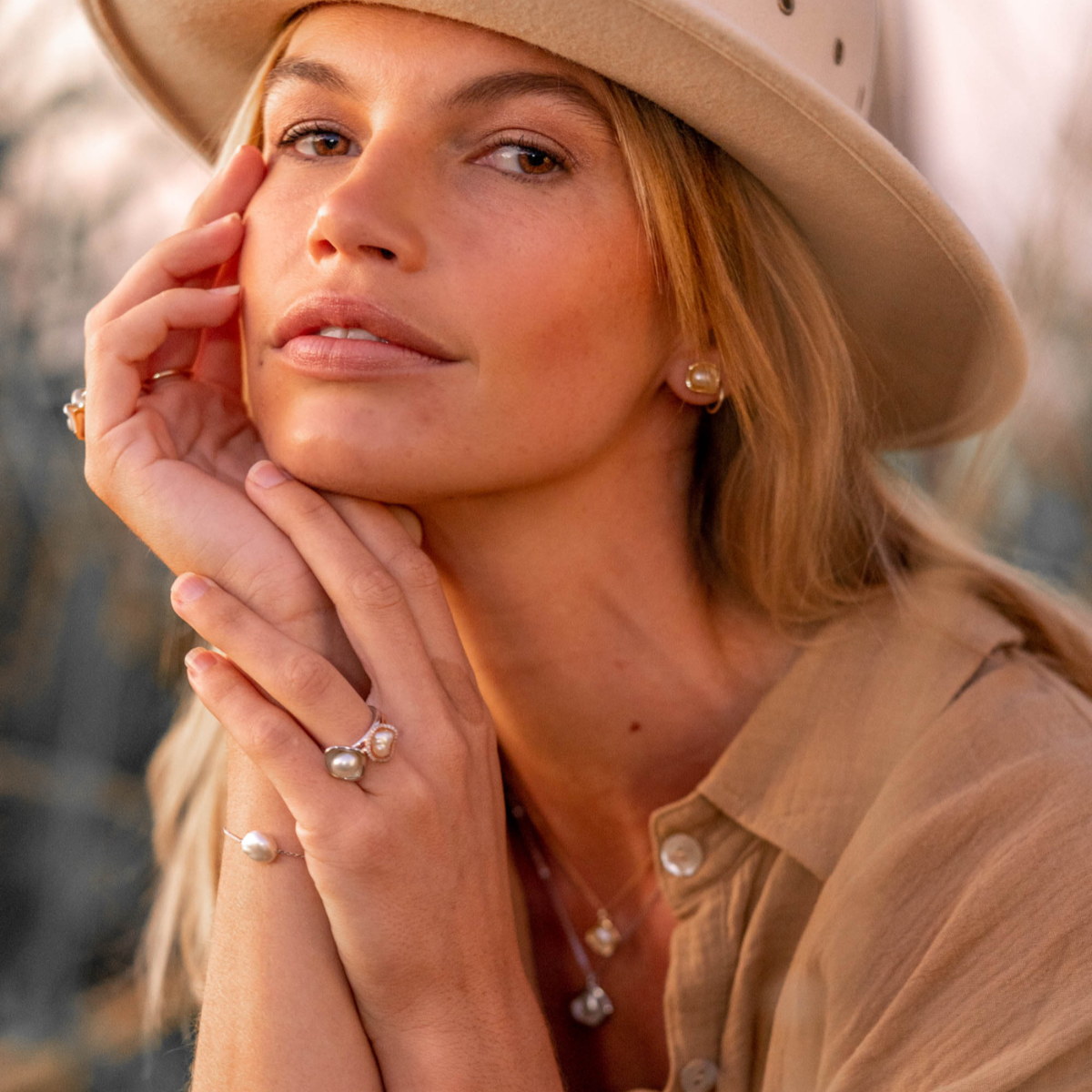
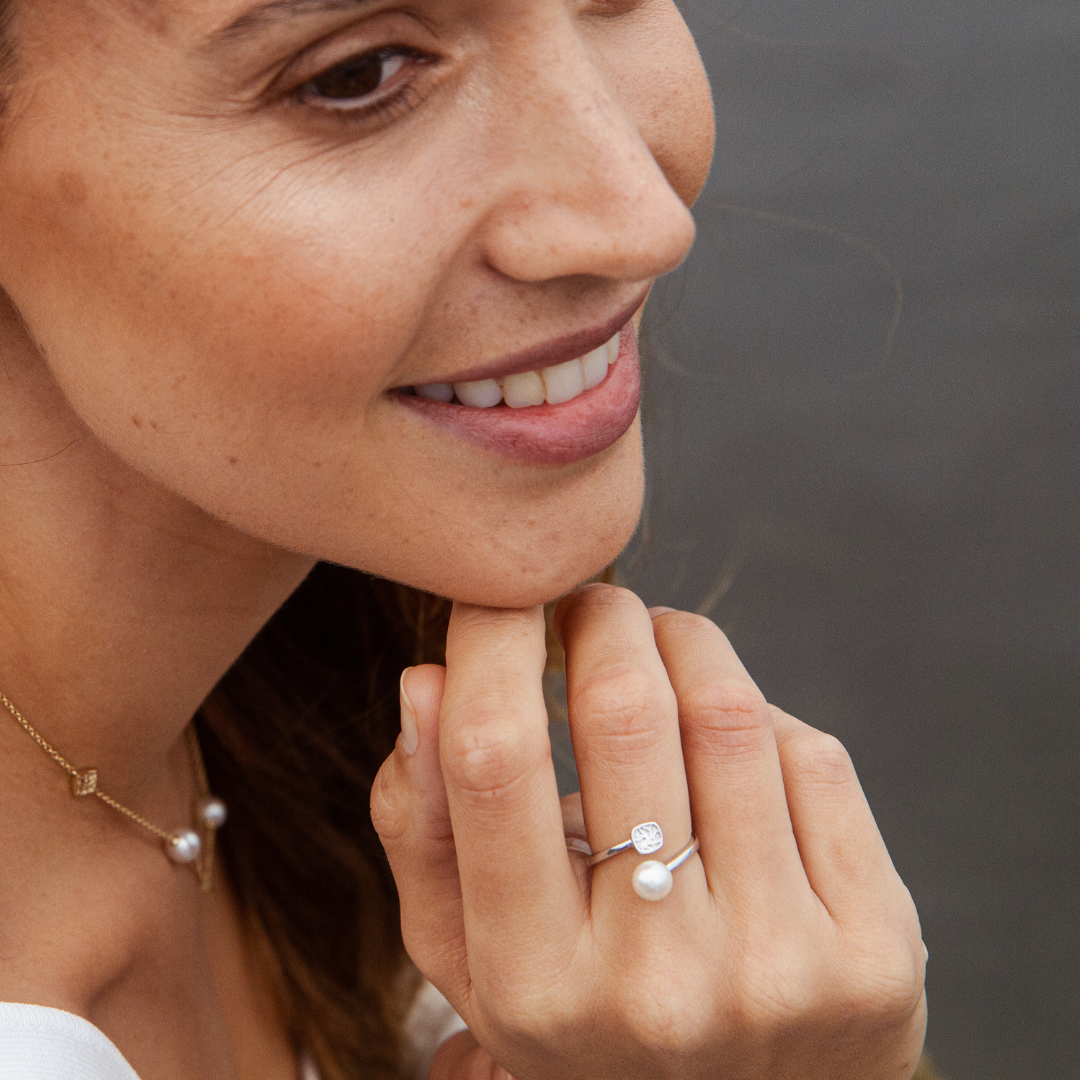
Learn how to how to identify sustainable jewellery by considering the following:
Transparency – sustainable jewellery brands will openly share their sources, processes and values, the locations where their gemstones have been mined or farmed, and seek to educate consumers around ethical practices.
Traceability – look for jewellery brands that can trace their pearls from the farm to the showroom, all backed up by Statements of Provenance.
Diamonds – should come from suppliers accredited with the Kimberley Process.
Sustainable farming – choose pearls from pearl farms that protect marine ecosystems and use low-impact practices.
Low waste and recycled metals – choose farms that utilise recycled metals where possible, minimise the use of plastics (for example in packaging and displays) and embrace waste-reduction practices.
Fair labour – choose jewellery brands that support ethical working conditions and fair wages for all staff involved.
The purchase of a piece of high-end jewellery is a meaningful experience every time. It captures a moment in time, it speaks to the soul, it becomes a family heirloom. But your choice of jewellery has a deeper impact. When consciously chosen, it can support our planet and its precious ecosystems in many ways and can play a meaningful role in the fight against climate change. It’s jewellery that truly aligns with your values.
This is our approach at Pearls of Australia. Every pearl that we farm supports our marine environment, honours our communities and promotes sustainable and ethical jewellery. Shop our range of sustainable pearls grown in Australia’s most pristine marine environments, and take home a piece that you can truly feel good about.
Our Australian South Sea pearls come from our Cygnet Bay Pearl Farm just north of Broome. They are cultured within the Pinctada maxima pearl shell. With pearls featured in the purest of white, this range boasts elegant jewellery pieces in rings, bracelets and pendant necklaces.
Our Akoya pearls Pinctada fucata are cultured at our Broken Bay Pearl Farm on the mouth of the Hawkesbury River just north of Sydney. This range features elegant options of pearl earrings, rings, necklaces and more. With high lustre these pearls are the perfect choice for a more vibrant and beautiful look.
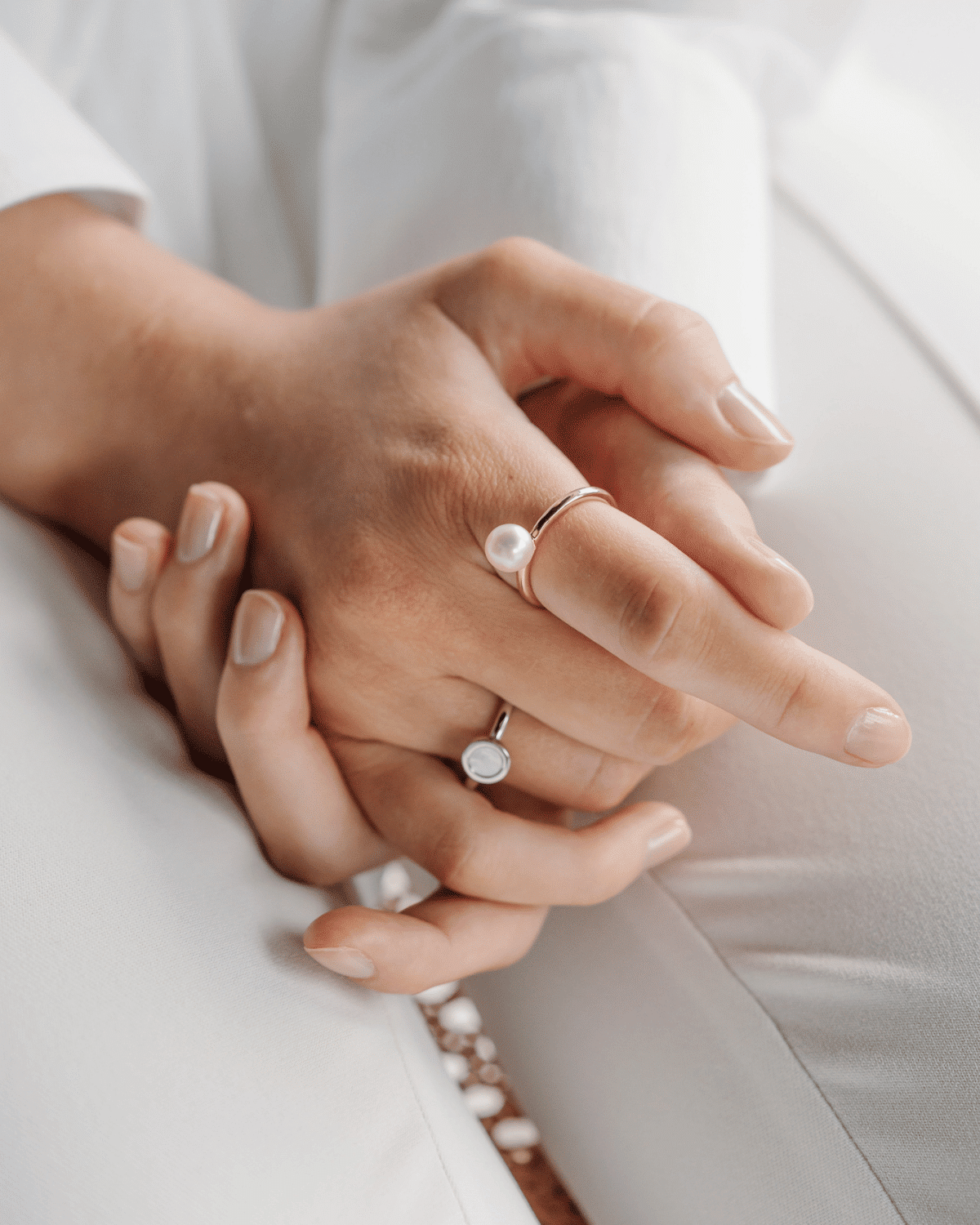
Prefer to talk to one of our Jewellery and Pearl experts before purchasing one of our Australian pearl pieces? They would love to help you in any way, please contact them either by sending an email to hello@pearlsofaustralia.com.au or call (08) 6478 6886.
Yes, pearls are generally more sustainable than mined gemstones because they are grown in living oysters rather than extracted from the earth. Responsible pearl farming improves marine environments by filtering water and supporting biodiversity. Unlike traditional mining, saltwater pearl cultivation leaves a lighter environmental footprint, avoiding land degradation and use of harmful chemicals that may pollute the surrounding ecosystems.
Not all pearls are sustainable. Sustainability depends on how and where they are cultivated. Ethical farms prioritise environmental health, traceability and fair labour practices and do not use chemical enhancements to alter their pearls. It’s important to choose pearls from producers committed to responsible cultivation and transparent sourcing.That’s why at Pearls of Australia, one of our highest mandates is the education of our customers towards the benefits of sustainable pearls when farmed in harmony with both people and planet.
Traceability involves being able to track a pearl’s journey from the moment it’s seeded in an oyster to the finished piece of jewellery. It ensures transparency in sourcing, farming, and production practices. This helps buyers make informed, ethical choices. We provide Certificates of Authenticity with each pearl jewellery piece to ensure traceability to our customers.
Look for jewellery brands that share clear information about where and how their pearls are farmed. Responsible producers often use traceability systems, follow sustainable farming practices, and support fair labour. Transparency is key. If a brand is open about its process, that’s a strong sign of ethical sourcing and sustainable practices.
When we choose sustainable jewellery, we play a meaningful part in protecting the environment,respecting marine life, and empowering local communities. As consumers become more aware, the pearl industry continues to evolve, with ongoing scientific research and cultural partnerships driving higher standards for ethical and environmental responsibility.
订阅我们的新闻通讯,了解最新的行业趋势、特别促销和重要更新。